- Home
- About Us
- Products
-
Heat-Pump Dehumidifier DeAir
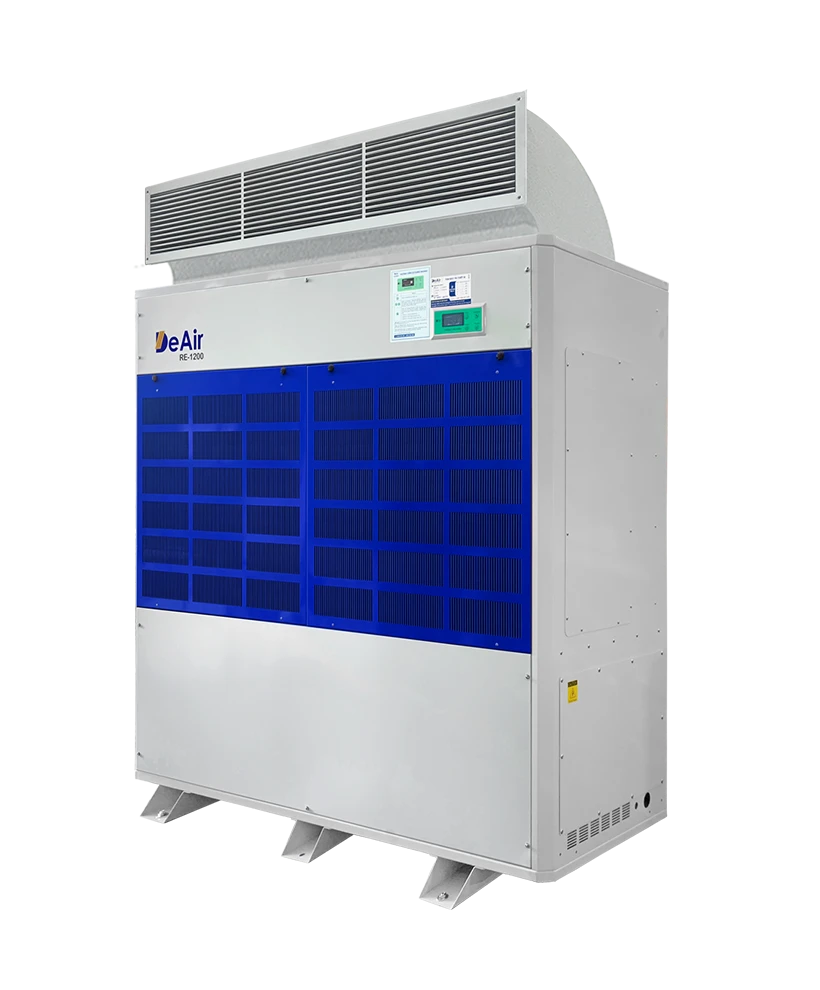 DeAir.RE
DeAir.RE -
Heat-Pump Dryer DeAir.RE-H
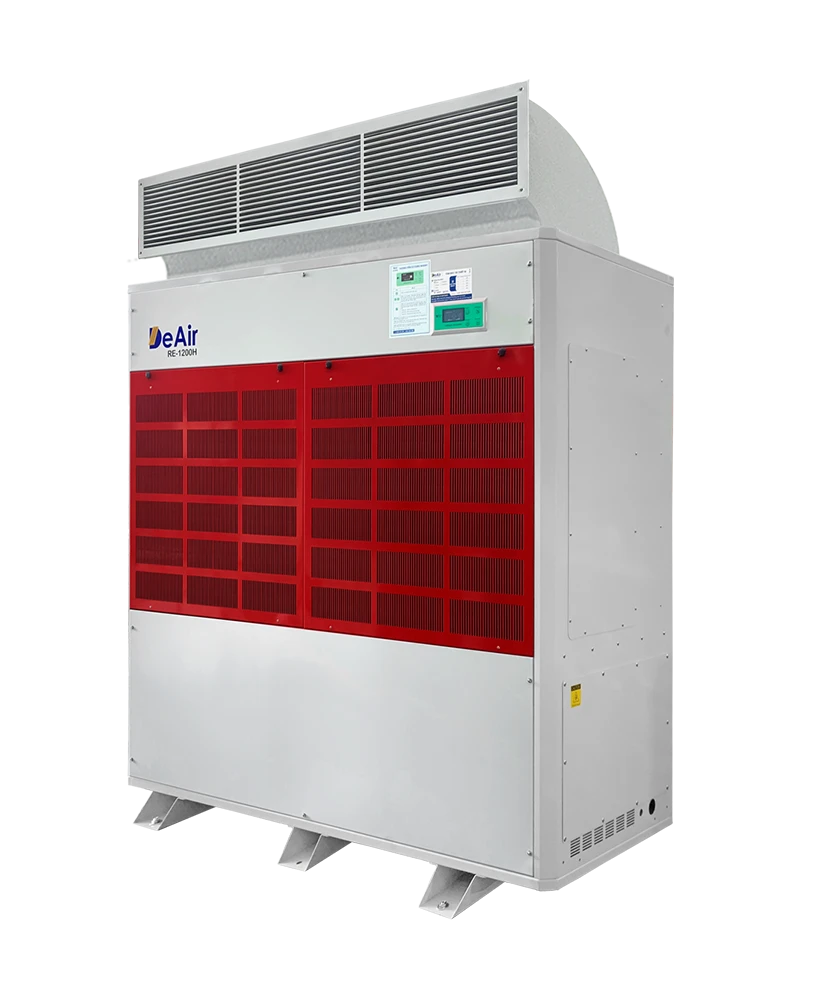 DeAir.RE-H
DeAir.RE-H -
Heat-Pump Stainless Steel Dehumidifier
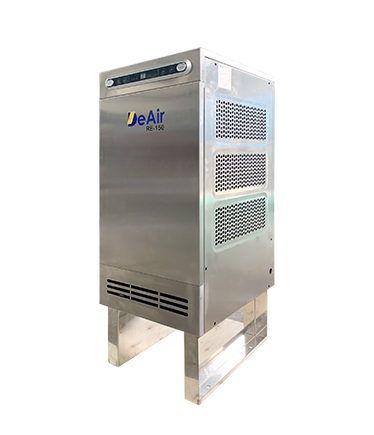 DeAir.RE-INOX
DeAir.RE-INOX -
Heat-Pump Isothermal Dehumidifier DeAir.CRE
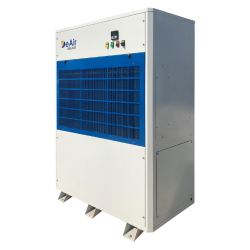 DeAir.CRE
DeAir.CRE -
Dezenno Dehumidifier
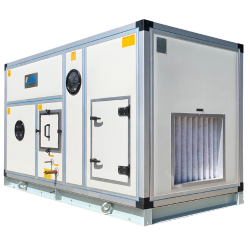 Dezenno
Dezenno -
Heat-Pump Ceiling Mounted Dehumidifier DeAir
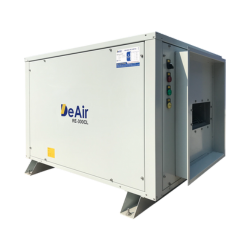 DeAir.RE-CL
DeAir.RE-CL -
Dehumidifier Olmas
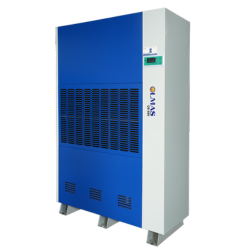 Olmas-OS
Olmas-OS -
Industrial Humidifier DeAir
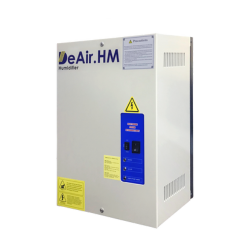 DeAir.HM
DeAir.HM -
Heat-Pump Dryer Daxwell
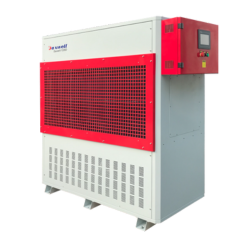 Daxwell
Daxwell -
Electric Duct Heater DeAir
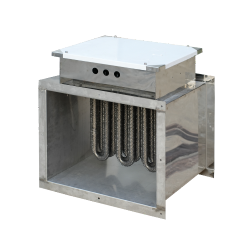 DeAir.Heat
DeAir.Heat -
Air Handling Unit Dezenno.MAX
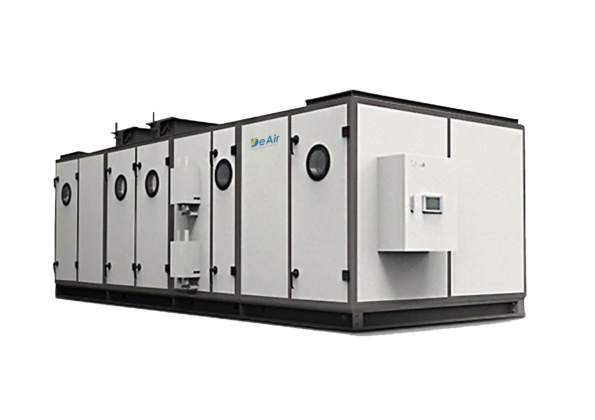 AHU
AHU
-
- Services
- Projects
- Warranty – Maintenance
- News
- Contact
Decoding the Science of Coffee Drying: From Sun Drying to Heat Pumps & A Daxwell Case Study in Dak Lak
25/10/2025
Introduction: Elevating Vietnam's "Black Gold" - A Revolution Starting from the Drying Stage
Vietnam proudly stands as the world's leading exporter of Robusta coffee. However, to truly elevate the value of this "black gold," the coffee industry is undergoing a strong transformation from "quantity export" to "high quality," aiming for specialty coffee with refined flavors. According to information from CafeF, the potential for high-quality Vietnamese coffee exports is immense.
Few realize that the final "flavor" in a cup of coffee is largely determined by the post-harvest process, where drying is the crucial stage. Unfortunately, traditional sun drying (on patios) or conventional high-temperature ovens are inadvertently "killing" precious flavor precursors, causing mold, contamination, and severe inconsistencies in quality.
This article will delve into the science of coffee drying, explain why temperature is the key factor, and introduce the technological solution of the Daxwell heat-pump dryer - a step forward in preserving and enhancing the flavor of Vietnamese coffee, showcased through a real-world project in Dak Lak.
Table of Contents
- 1. "Patio Drying" & High-Heat Ovens: Hidden Risks Destroying Coffee Quality
- 2. Scientific Analysis: How Drying Temperature Critically Affects Flavor
- 3. Heat-Pump Drying Technology: The Optimal Solution for High-Quality Coffee
- 4. Case Study: DeAir Installs Daxwell DX-600M Drying Room in Dak Lak
- 5. DeAir's Daxwell Dryer: Mastering "Made in Vietnam" Technology
- 6. Frequently Asked Questions (FAQ)
1. "Patio Drying" & High-Heat Ovens: Hidden Risks Destroying Coffee Quality
Risks of Manual Sun Drying
This traditional method carries many risks:
- Weather Dependent: Drying time can take 10-14 days, even longer if it rains, according to Prime Coffee.
- Mold & Uncontrolled Fermentation: High risk during rain or insufficient sun, potentially ruining the entire batch.
- Contamination: Easily contaminated by dust, dirt, insects, and animal droppings.
- Inconsistent Quality: Difficult to turn evenly, leading to uneven drying, affecting the subsequent roasting process.
Risks of High-Temperature Drying (Drum dryers, cross-flow dryers using wood/coal)
To shorten the time, many places use high-heat dryers (>60°C), but this creates other serious problems:
- "Case Hardening": The outer shell dries and "locks" too quickly, while the inside remains moist (uneven moisture).
- Embryo Damage: As scientific studies show, drying temperatures above 40°C - 50°C can damage the coffee bean embryo and cell structure, reducing bean quality.
- Flavor Loss & Smoky Taint: High heat evaporates delicate aromatic compounds. Direct drying with wood/coal can also impart an undesirable smoky flavor, a serious defect.
2. Scientific Analysis: How Drying Temperature Critically Affects Coffee Flavor
The quality of a cup of coffee ("cup quality") is determined by a complex balance of hundreds of chemical compounds. The drying process plays a key role in "preserving" and "developing" these flavor precursors.
Phase 1 (Drying the Parchment): Low Temperature (below 40°C) to Preserve Enzymes
Wet-processed coffee (parchment coffee) has a moisture content of ~45-55%. The initial phase requires slow drying at low temperatures. Scientific studies published on SciELO Colombia and ResearchGate clearly indicate: drying temperatures should not exceed 40°C during this stage. Higher temperatures can cause embryo damage (loss of viability) and destroy important enzymes, which are prerequisites for flavor development during roasting.
Phase 2 (Drying the Bean): Stable Temperature (40-50°C) to Develop Flavor Precursors
As the bean's moisture decreases (the "soft black" and "hard black" stages, ~32% down to 16%), a stable temperature needs to be maintained. According to specialty coffee resources like Prime Coffee and Coffee Concept, the ideal drying temperature for Robusta should be kept stable and not exceed 50°C. Maintaining a stable temperature without thermal shock allows chemical reactions to proceed slowly, setting the stage for the perfect Maillard Reaction (which creates color and aroma) during roasting.
Final Phase (Stabilization): Reaching the Golden 10-12% Moisture Content
The final stage (from 16% down to 10-12%) is the most challenging and requires precision. Over-drying (<10%) makes the beans brittle and prone to breaking during roasting. Insufficient drying (>12%) leads to mold during storage. Scientific Conclusion: The ideal coffee drying process involves drying at a low and stably controlled temperature range over an extended period, rather than rapid drying at high temperatures.
3. Heat-Pump Drying Technology: The Optimal Solution for High-Quality Coffee
Heat-Pump drying technology is the perfect answer, precisely meeting the strict scientific requirements of the coffee drying process:
- Low & Stable Temperature Drying: Unlike resistance heaters (high heat), the Heat-Pump dryer works by dehumidifying the air, allowing effective drying in the low-to-medium temperature range (30-60°C) – perfectly matching the ideal scientific range (40-50°C) for preserving coffee flavor.
- Superior Energy Savings: Heat-Pump technology reuses heat energy from the condensation process, saving up to 50-70% on electricity compared to traditional resistance drying (according to studies on heat pump drying by VAAS - Vietnam Academy of Agricultural Sciences).
- Precise Final Moisture Control: Allows setting the desired final moisture content (10-12%); the machine automatically stops when the beans reach this target, ensuring 100% consistent quality for the entire batch.
4. [Case Study] DeAir Installs Daxwell DX-600M Drying Room in the "Coffee Capital" Dak Lak
Understanding the new trends and technical requirements, a client in Dak Lak decided to invest in Heat-Pump drying technology to improve the quality of their Robusta coffee. DeAir was chosen to supply and commission a drying room system using the Daxwell DX-600M dryer.
- The DeAir Solution: Included an insulated panel drying room to ensure a sealed, stable drying environment, unaffected by external weather, and the Daxwell DX-600M dryer – the "heart" of the system – providing a precisely temperature-controlled flow of dry air to preserve the flavor of the Robusta beans.


5. DeAir's Daxwell Dryer: Mastering "Made in Vietnam" Technology
PLC & HMI Control System: Programming Multi-Stage Drying Cycles
This is a key advantage of Daxwell. Based on scientific research, the machine allows users to program multiple drying stages (e.g., the first 10 hours at 40°C, the next 8 hours at 45°C...) via the HMI touchscreen. This enables the simulation of the ideal scientific drying profile for coffee beans.
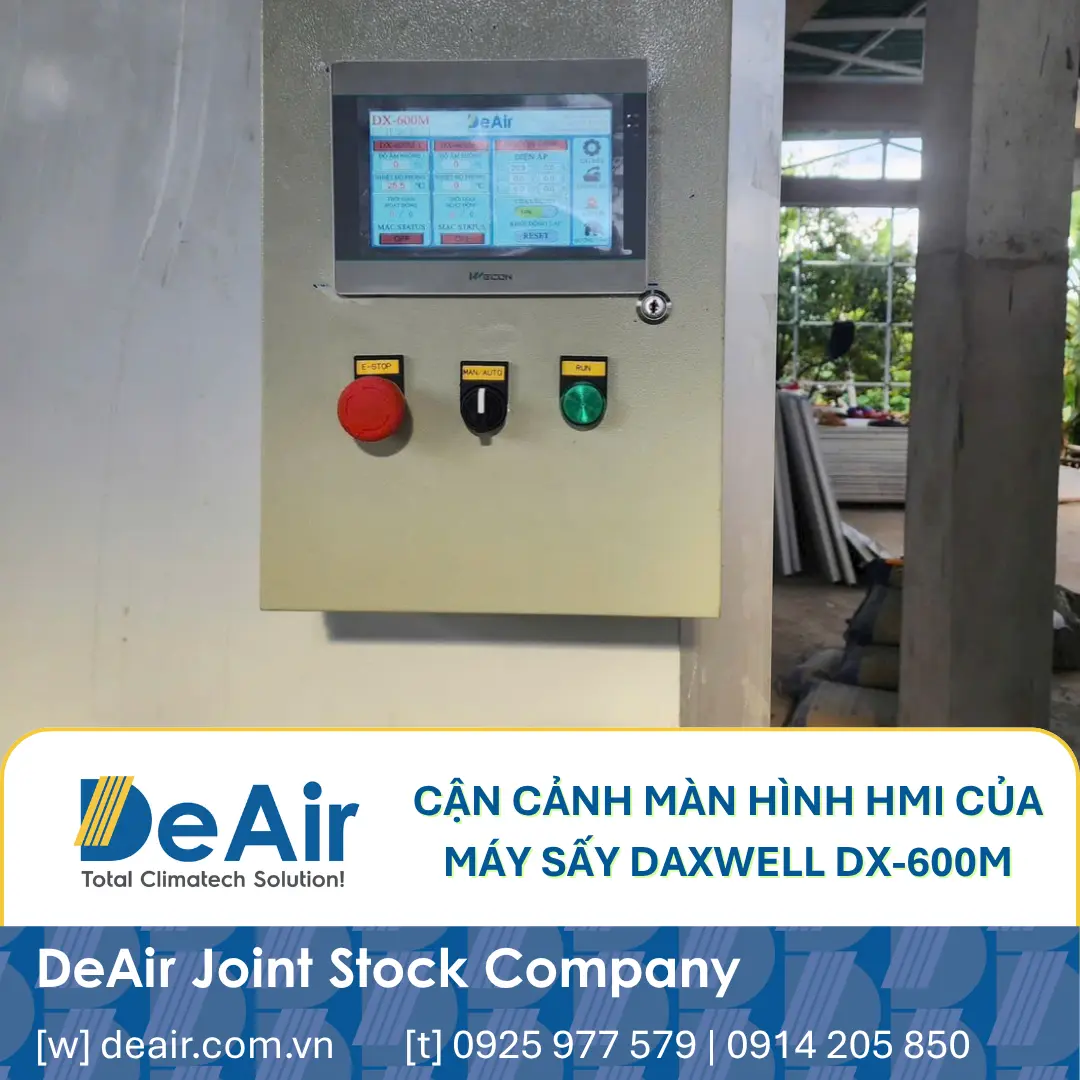
R&D and "Made in Vietnam" Customization
As the manufacturer, DeAir has its own lab to research and optimize the drying cycle specifically for *your* coffee beans. We understand the actual conditions in the Central Highlands and always refer to standards and recommendations from leading local institutions like WASI (Western Highlands Agriculture & Forestry Science Institute).
6. Frequently Asked Questions (FAQ)
1. What is the ideal drying temperature for coffee?
According to multiple scientific studies, to preserve quality and the bean embryo, the drying temperature should not exceed 40°C - 50°C, especially in the initial phase. Drying at excessively high temperatures will damage the bean structure and reduce flavor quality.
2. How long does it take to dry coffee with a Daxwell Heat-Pump dryer?
The drying time depends on the initial moisture content, processing method (wet, dry, honey), and machine capacity. However, the advantage of Daxwell is 100% control, independent of weather, helping reduce drying time from 10-14 days (sun drying) to around 20-30 hours of machine drying, while ensuring consistent quality.
3. Can I dry other agricultural products with the Daxwell dryer?
Certainly. The Daxwell dryer is designed for multi-purpose use, with flexible drying cycle programming via the HMI screen, making it effective for various agricultural products like fruits, herbs, seafood, and handicrafts.
Don't Let Weather Dictate Your Coffee Quality!
Contact DeAir today for a consultation on the Daxwell heat-pump drying solution. We offer free sample drying tests of your coffee beans at our lab to determine the optimal process!
DEAIR JOINT STOCK COMPANY
Email: operation@deair.com.vn
Hotline: +84 925 977 579 (Ms. Tam) | +84 914 205 850 (Ms. Hoa)
Website: deair.com.vn
Sign up for news from DeAir
Related news






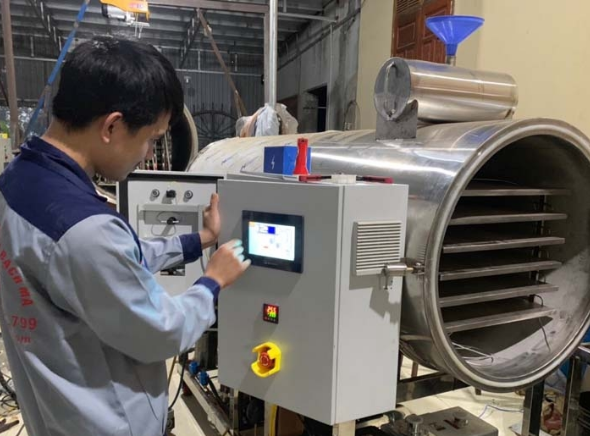


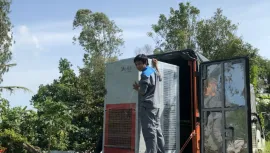
![[Case Study] DeAir Installs DeAir.De Rotor Humidity Control System for Pharmaceutical Plant in Binh Duong [Case Study] DeAir Installs DeAir.De Rotor Humidity Control System for Pharmaceutical Plant in Binh Duong](https://deair.com.vn/thumbs/news/2023_04/ban_giao_may_cho_duoc_bd/[270x153-cr]image1-1024x772.jpg__cv.webp)
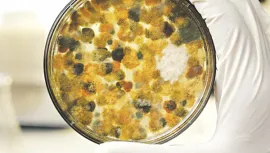
![[Review & Guide] Olmas OS-300: The New Humidity Control "Warrior" for Medium to Large Warehouses [Review & Guide] Olmas OS-300: The New Humidity Control "Warrior" for Medium to Large Warehouses](https://deair.com.vn/thumbs/news/huong_dan_su_dung_may_olmas_21/[270x153-cr]vtm06440.png)